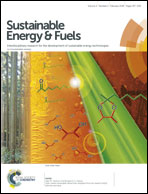Sustainable production of medium chain fatty acids (MCFA) with an enriched mixed bacterial culture: microbial characterization using molecular methods
Abstract
Chain elongation is the process by which bacteria convert ethanol and short chain fatty acids (SCFA) into medium chain fatty acids (MCFA). In the present study, a bacterial mixed culture was enriched and used together with synthetic waste (SW) to produce commercially valuable SCFA and MCFA for 91 days by anaerobic fermentation. For the first time, the effects of substrate, electron donor, and methane inhibition on MCFA production were evaluated. The produced SCFA, MCFA and biogas were analyzed using chromatography techniques. Butyrate (C4) and caproate (C6) were the dominant products in SCFA and MCFA, respectively. Bacteria in conditions of methane inhibition produced the highest concentration of butyrate (8.2 g l−1), caproate (8.6 g l−1), heptanoate (0.7 g l−1), and caprylate (0.23 g l−1). The dominance of Clostridia, Rumen bacterium, and the Actinomyces group in the enriched culture were identified by denaturing gradient gel electrophoresis (DGGE) analysis. Studies are being conducted under pipeline with enriched cultures to produce SCFA and MCFA using the real waste streams.



 Please wait while we load your content...
Please wait while we load your content...